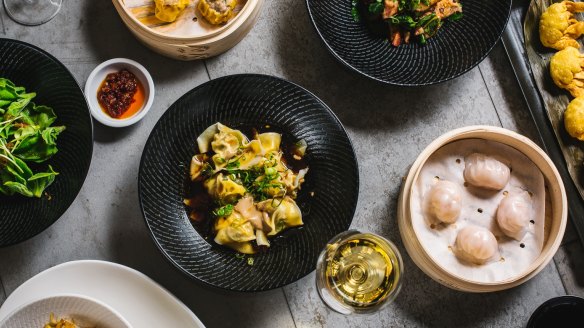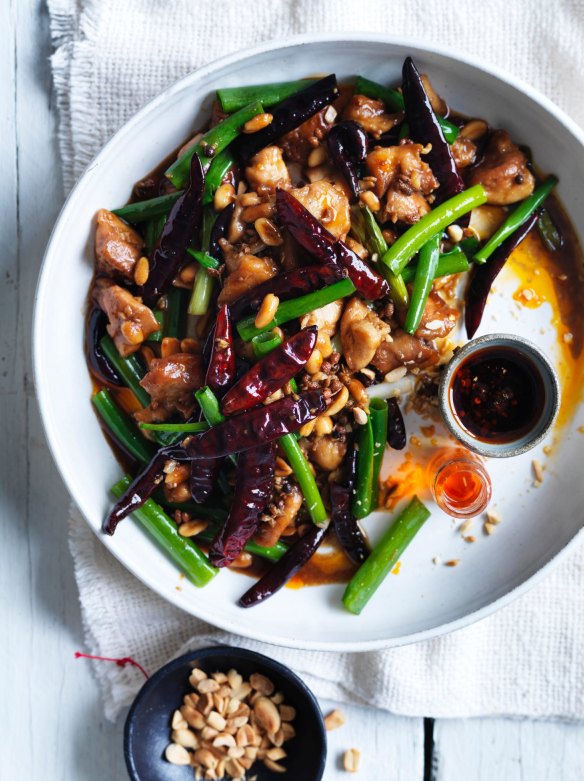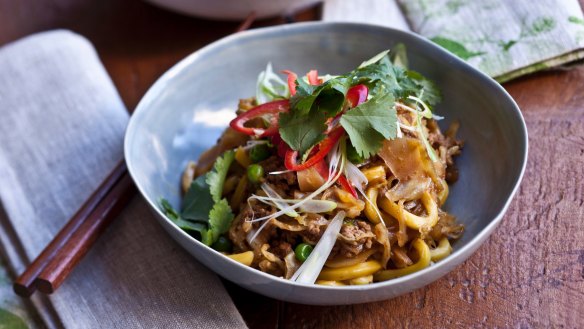Best wines to take to a BYO Chinese restaurant

Ah, Chinese cuisine, that glorious, unpretentious, fun-to-eat fare that, alas, often poses wine-pairing challenges. The food is often bold – spicy or sweet or oozing with savoury umami, the fifth flavour that is hard to describe but easy to love. Sometimes a bite of Chinese food can have all three of those things going on at once. But perhaps just as often, the food is mildly spiced and sauced. It's tough pairing wine with those kinds of extremes, but fortunately there are lots of wine styles out there.
When I go to a BYO Chinese restaurant, I like to carry along the wines I would like to drink and then pick foods that will go well with them. I usually like to pack a sparkling wine, a white and a red. Chinese cuisine is all over the map, in the best possible way. It's best to be prepared.
Chinese is meant to be shared, and it's almost always served on communal plates with giant serving spoons. Even if it's just one other person and me (but especially if there are more people), I want to order a few appetisers, some entrees and some side dishes, and indulge in tasting everything. Half the fun of eating Chinese food is enjoying all of the various flavours and textures, and the other half is taking home leftovers. The same could be said of wine-drinking – though wine never seems to come home with me. Empty bottles at every turn.

Below are some suggestions on what styles of wines to drink with nine popular Chinese dishes.
If you really want to simplify things, you could stick to this general rule: with Cantonese, dry riesling; with Sichuan, off-dry riesling. Cantonese cuisine is as fresh and unadorned as any style of Chinese cooking, which makes dry riesling a good partner to it. Sichuan is the style of cooking that brings the heat of spice, and "off-dry" in any wine means it carries a little sweetness with it. Riesling is the magic potion for Chinese food, especially off-dry riesling, which, like champagne, balances out Chinese food's glorious salt, sweetness and spice with acidity, body and that hint of residual sugar.
Many riesling bottles carry an indicator on their back labels as to the wine's sweetness. While most of the dishes below would pair well with an off-dry riesling, some of them practically require it – a little sweetness to temper the heat. Besides that, there are plenty of other options, too, and some of them are listed here.
Dim sum
Whether you are ordering from rolling yum cha carts or the menu, these are the dumplings filled with shrimp and chives, the large noodle pillows filled with pork, the beef balls and the turnip cakes, among dozens of other dishes, and they're usually served in the morning and early afternoon. For all of these reasons, you can't go wrong with a sparkling wine. Champagne, local sparkling, prosecco – you pick – and you're probably going to be just fine. Dim sum is basically Chinese brunch, and you love sparkling wine at brunch.
Lo mein
"Mein" means noodles, and when these are tossed with vegetables, zippy, green sauvignon blanc, gruner veltliner or sparkling wine would make nice accompaniments.

Chow mein
"Chow" refers to the preparation of the noodles – stir-fried – calling for a wine that can cut through the weight and richness of the oil. Try a dry riesling, rosé or sparkling wine. The same wine styles could work for fried rice, too – again providing enough fruit and acidity to cut the richness.
Moo shu pork
Umami, the "fifth flavour" is all over this rich, mouth-filling dish, and it gets wrapped up nicely in thin-as-paper pancakes. An off-dry riesling or a chardonnay could make for a nice match, or moving into reds, you could try wines from Beaujolais or peppery cabernet franc.
Peking duck
You've got that crispy skin, the fatty meat, the plum sauce and, once again, pancakes to wrap it all up. For reds, try a ripe pinot noir, or a merlot if you want something a little bolder. If you want to stick with a white, opt for a chenin blanc or a good old off-dry riesling.
Ma po tofu
Now we're getting into some Sichuan spice. Whatever you choose to pair with spicy Chinese fare, make sure it has low tannins and low alcohol. A wine with either of those in high doses will only make the heat hotter. For this dish, pick pinot gris, an off-dry chenin blanc or a gewurztraminer on the white side. Keep your reds fruity and low in tannin. Try a Beaujolais, pinot noir or a delightfully fizzy lambrusco.
Kung pao chicken
Now we're getting even spicier. This dish can make your lips buzz, and to offset that heat, opt for an off-dry riesling or a delightfully aromatic gewurztraminer. Off-dry whites go with spicy like Batman goes with fighting crime.
Beef and broccoli
This savoury dish is not as hot as the previous two, which means it will play well with silky reds, such as merlot, grenache or a GSM (grenache, shiraz, mourvedre) blend.
Chicago Tribune